 I must confess I knew very little about Annie Leibovitz before I saw her sister’s documentary on her called Imagine. I knew she was a big deal in Hollywood and the celebrity world – as they will jet set the world within 24 hours to be on location for her to photograph them. I knew she wore glasses and had crazy grey hair. I also knew that she took breathtaking photographs of over the top narratives. I thought Tim walker was a big deal (Sorry Tim), not to compare or anything, but the work of Annie has always had a big impact on me. I remember the Mary Antoinette shoot she did for the US Vogue like the back of my hand. I make a note of buying Vanity Fair if only to scour her latest creations.
I must confess I knew very little about Annie Leibovitz before I saw her sister’s documentary on her called Imagine. I knew she was a big deal in Hollywood and the celebrity world – as they will jet set the world within 24 hours to be on location for her to photograph them. I knew she wore glasses and had crazy grey hair. I also knew that she took breathtaking photographs of over the top narratives. I thought Tim walker was a big deal (Sorry Tim), not to compare or anything, but the work of Annie has always had a big impact on me. I remember the Mary Antoinette shoot she did for the US Vogue like the back of my hand. I make a note of buying Vanity Fair if only to scour her latest creations. Annie’s sister Barbra presents an intimate portrait of the still very demanded photographer who shot Royalty, politicians, musicians, and actors. Some of her most famous portraits were of Demi Moore when she was pregnant, and a naked John Lennon next to a fully clothed Yoko Ono taken just hours before his death.
Annie’s sister Barbra presents an intimate portrait of the still very demanded photographer who shot Royalty, politicians, musicians, and actors. Some of her most famous portraits were of Demi Moore when she was pregnant, and a naked John Lennon next to a fully clothed Yoko Ono taken just hours before his death. 

Annie takes pictures like she breathes air, the documentary covers the many aspects of her life in section. Her personal wall, her magazine wall, and her relationship with drugs, music, Susan her partner, and her children. She has a huge family and remembers viewing the world through the frame of her car window much like a picture frame. To her, family and car rides complement each other and brings back memories of childhood. When she is driving her car it is when her body can take over and her mind can float. Her mother documented everything, always clicking way at family affairs, Annie and her sister joke the camera was like another member to their family.
When her father was in Vietnam, he dragged her to the Philippine where she took her very first pictures on base. She remembers her ambition at the time was to become an art teacher, and it was only when she took a workshop in photography using a 35 mm camera, which was a portable, relaxed, fluid, small camera, was she able to take personal photographs.
Her mission at that time was to travel, and be mobile, and she was able to achieve that by working with the Rolling stones Magazine. To her a magazine was like an empty canvas waiting to be filled with beautiful imagery. She was happy working with a magazine and remembers the powerful feeling she had when she first saw her pictures in print replicated over and over again in each issue.
The editor of the Rolling Stones nurtured her, gave her space and the freedom to do her thing which she never failed to deliver. She observed things well and would usually spend 3 to 4 days with the subject she was photographing to understand them in depth. She wanted to become part of what was going on, and meshed in the environment of the musicians she was photographing.
Arnold Schwarzenegger comments through personal experience that Annie has this great ability to adapt to the circumstances around her, quickly becoming one of the gang. Mick Jagger and Keith Richards agree with Arnold and through their experiences comment that Annie is not intrusive, and she did everything with them. She was the number one photographer of Rock and Roll and was great at capturing the movement of the music and the musicians.

 Photography is a heightened moment to Annie who notes that taking photos is a little note, a portrait of that moment. She loves that fact that she can't actually photograph dance but can only capture a single moment.
Photography is a heightened moment to Annie who notes that taking photos is a little note, a portrait of that moment. She loves that fact that she can't actually photograph dance but can only capture a single moment.
She cites Bea Feiler has her teacher; she had this ability to choose the pictures she wanted to show by looking at her contact sheet for 3 minutes, when it took Annie 5 hours. Annie tried to incorporate something of the personality of her subject into the picture, which made her work more narrative, calling them story portraits.
Annie states she has basic stupid ideas, and people go with them.Yoko talks about how Annie photographed herself and John at the height of their intimacy, when they were really feeling good about each other. Instead of approaching them with the bossy attitude of “Here’s what we’re going to do,” Annie would be like, "Here’s what I’m thinking, what do you think?" which John really liked. She allowed him space to collaborate his ideas with her. When she asked the famous couple if she could photograph them naked, Yoko didn’t want to, but John didn’t mind. Yoko says, John was different than most men in that sense, he didn’t mind being naked, and looking vulnerable by being naked with his woman.
After 13 years with the Rolling Stones, she got offered a job with Vanity Fair which at the time was a non-existent publication. The Rolling Stones used to be a drug culture to her, and the drug of choice was cocaine. The documentary becomes a little fuzzy at this point but you do understand that Annie had some sort of addiction to drugs and she went to rehab to get some professional help before working with Vanity Fair.
Vanity Fair was different from the Rolling Stones for Annie because she was coming into a mainstream publication. Conde Nast was more polished and clean and commercial than the Rolling Stones and to Annie the studio photo shooting and the dressing up seemed to her silly at first. During the time she was transitioning into a different environment with photography she met Susan Sontag. Susan was a writer and wrote extraordinary essays. She knew herself very well and decided she was gong to know Annie. Susan was a wordy person, Annie was an image person. Many said they complemented each other and though Susan was tough on Annie, she allowed her to explore parts of herself that weren’t visual.
 Annie took Vanity Fair from selling 800,000 magazines to a million. She provoked people by doing different things with the celebrities. Budget is never a care for her, as the magazine companies pick up the bill. With time her shoots began to get more complicated. Annie wanted fire, rain, a circus, animals, a plane for her narrative photo shoots, and she always got what she wanted.
Annie took Vanity Fair from selling 800,000 magazines to a million. She provoked people by doing different things with the celebrities. Budget is never a care for her, as the magazine companies pick up the bill. With time her shoots began to get more complicated. Annie wanted fire, rain, a circus, animals, a plane for her narrative photo shoots, and she always got what she wanted.







 It was around then Annie felt she was losing herself to celebrity photography. She comments in the documentary that ‘the famous people were winning’ so Susan took her to the war in Sarajevo to take pictures. It echoed back to when Annie first starting taking photographs. On her first day she went to the morgue to take pictures of the dead. To her war has no reason, no explanation. The scenes of war were random, and leveled her experience. Going to Sarajevo with Susan rekindled Annie's passion for photography and reminded her of how she took pictures back when she was at the rolling stones, with a small portable camera. She was very grateful for that experience.
It was around then Annie felt she was losing herself to celebrity photography. She comments in the documentary that ‘the famous people were winning’ so Susan took her to the war in Sarajevo to take pictures. It echoed back to when Annie first starting taking photographs. On her first day she went to the morgue to take pictures of the dead. To her war has no reason, no explanation. The scenes of war were random, and leveled her experience. Going to Sarajevo with Susan rekindled Annie's passion for photography and reminded her of how she took pictures back when she was at the rolling stones, with a small portable camera. She was very grateful for that experience.
She thought her world was flat before she had children. It gave her life pace and made her stop working her crew to the ground. She finds taking pictures of her children a privilege, a responsibility she loves, and because of them she sees a different dimension to the world.

When her father was in Vietnam, he dragged her to the Philippine where she took her very first pictures on base. She remembers her ambition at the time was to become an art teacher, and it was only when she took a workshop in photography using a 35 mm camera, which was a portable, relaxed, fluid, small camera, was she able to take personal photographs.
Her mission at that time was to travel, and be mobile, and she was able to achieve that by working with the Rolling stones Magazine. To her a magazine was like an empty canvas waiting to be filled with beautiful imagery. She was happy working with a magazine and remembers the powerful feeling she had when she first saw her pictures in print replicated over and over again in each issue.
The editor of the Rolling Stones nurtured her, gave her space and the freedom to do her thing which she never failed to deliver. She observed things well and would usually spend 3 to 4 days with the subject she was photographing to understand them in depth. She wanted to become part of what was going on, and meshed in the environment of the musicians she was photographing.
Arnold Schwarzenegger comments through personal experience that Annie has this great ability to adapt to the circumstances around her, quickly becoming one of the gang. Mick Jagger and Keith Richards agree with Arnold and through their experiences comment that Annie is not intrusive, and she did everything with them. She was the number one photographer of Rock and Roll and was great at capturing the movement of the music and the musicians.

Annie has always been interested in dance, creating portraits of Mark Morris (Alex from Sex and the City) She attended all his ballet rehearsals and according to him after a few days you forget she’s there, clicking away.
 Photography is a heightened moment to Annie who notes that taking photos is a little note, a portrait of that moment. She loves that fact that she can't actually photograph dance but can only capture a single moment.
Photography is a heightened moment to Annie who notes that taking photos is a little note, a portrait of that moment. She loves that fact that she can't actually photograph dance but can only capture a single moment.She cites Bea Feiler has her teacher; she had this ability to choose the pictures she wanted to show by looking at her contact sheet for 3 minutes, when it took Annie 5 hours. Annie tried to incorporate something of the personality of her subject into the picture, which made her work more narrative, calling them story portraits.
Annie states she has basic stupid ideas, and people go with them.Yoko talks about how Annie photographed herself and John at the height of their intimacy, when they were really feeling good about each other. Instead of approaching them with the bossy attitude of “Here’s what we’re going to do,” Annie would be like, "Here’s what I’m thinking, what do you think?" which John really liked. She allowed him space to collaborate his ideas with her. When she asked the famous couple if she could photograph them naked, Yoko didn’t want to, but John didn’t mind. Yoko says, John was different than most men in that sense, he didn’t mind being naked, and looking vulnerable by being naked with his woman.
After 13 years with the Rolling Stones, she got offered a job with Vanity Fair which at the time was a non-existent publication. The Rolling Stones used to be a drug culture to her, and the drug of choice was cocaine. The documentary becomes a little fuzzy at this point but you do understand that Annie had some sort of addiction to drugs and she went to rehab to get some professional help before working with Vanity Fair.
Vanity Fair was different from the Rolling Stones for Annie because she was coming into a mainstream publication. Conde Nast was more polished and clean and commercial than the Rolling Stones and to Annie the studio photo shooting and the dressing up seemed to her silly at first. During the time she was transitioning into a different environment with photography she met Susan Sontag. Susan was a writer and wrote extraordinary essays. She knew herself very well and decided she was gong to know Annie. Susan was a wordy person, Annie was an image person. Many said they complemented each other and though Susan was tough on Annie, she allowed her to explore parts of herself that weren’t visual.
 Annie took Vanity Fair from selling 800,000 magazines to a million. She provoked people by doing different things with the celebrities. Budget is never a care for her, as the magazine companies pick up the bill. With time her shoots began to get more complicated. Annie wanted fire, rain, a circus, animals, a plane for her narrative photo shoots, and she always got what she wanted.
Annie took Vanity Fair from selling 800,000 magazines to a million. She provoked people by doing different things with the celebrities. Budget is never a care for her, as the magazine companies pick up the bill. With time her shoots began to get more complicated. Annie wanted fire, rain, a circus, animals, a plane for her narrative photo shoots, and she always got what she wanted.






 It was around then Annie felt she was losing herself to celebrity photography. She comments in the documentary that ‘the famous people were winning’ so Susan took her to the war in Sarajevo to take pictures. It echoed back to when Annie first starting taking photographs. On her first day she went to the morgue to take pictures of the dead. To her war has no reason, no explanation. The scenes of war were random, and leveled her experience. Going to Sarajevo with Susan rekindled Annie's passion for photography and reminded her of how she took pictures back when she was at the rolling stones, with a small portable camera. She was very grateful for that experience.
It was around then Annie felt she was losing herself to celebrity photography. She comments in the documentary that ‘the famous people were winning’ so Susan took her to the war in Sarajevo to take pictures. It echoed back to when Annie first starting taking photographs. On her first day she went to the morgue to take pictures of the dead. To her war has no reason, no explanation. The scenes of war were random, and leveled her experience. Going to Sarajevo with Susan rekindled Annie's passion for photography and reminded her of how she took pictures back when she was at the rolling stones, with a small portable camera. She was very grateful for that experience.She thought her world was flat before she had children. It gave her life pace and made her stop working her crew to the ground. She finds taking pictures of her children a privilege, a responsibility she loves, and because of them she sees a different dimension to the world.
The documentary nears the end with comments from Hillary Clinton who is at wonder with Annie’s ability to humanize her subjects, to put them in a broader context. Life is so complicated and Annie adds that complexity and dimension to her photographs.
 In the last few moments of the film Annie talks about Susan’s death and how it felt like to be on her death bed. She starts to tear up just remembering how it was like to see her slip away. She photographs Susan dead, producing some heartbreaking portraits of her body coming home.
In the last few moments of the film Annie talks about Susan’s death and how it felt like to be on her death bed. She starts to tear up just remembering how it was like to see her slip away. She photographs Susan dead, producing some heartbreaking portraits of her body coming home.
 In the last few moments of the film Annie talks about Susan’s death and how it felt like to be on her death bed. She starts to tear up just remembering how it was like to see her slip away. She photographs Susan dead, producing some heartbreaking portraits of her body coming home.
In the last few moments of the film Annie talks about Susan’s death and how it felt like to be on her death bed. She starts to tear up just remembering how it was like to see her slip away. She photographs Susan dead, producing some heartbreaking portraits of her body coming home.Annie’s work is her greatest relationship, and she vows to take pictures until the day she dies. She says she is constantly framing the world around her.
.jpg)

This documentary is extremely gripping from start to finish showing me a very tender side of Annie who I assumed was just as wicked as Anna Wintour. It also details Annie Leibovitz emotional relationship with writer Susan Sontag, whom she photographed till the end of her life..jpg)


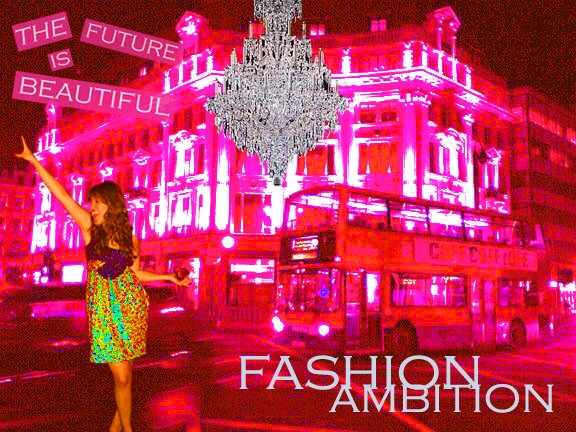








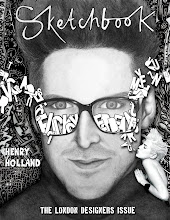

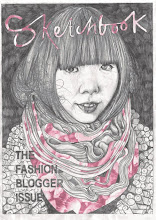

















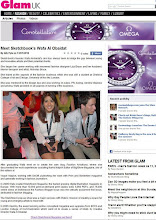



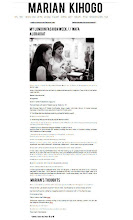








2 comments:
Thank you for enlightening me about the documentry i must buy it you are a great writer and made me really feel different about the way i view annies work xox
celebritynaked [url=http://coopernude23.livejournal.com/1349.html] naked photos[/url] Nudes+
Post a Comment